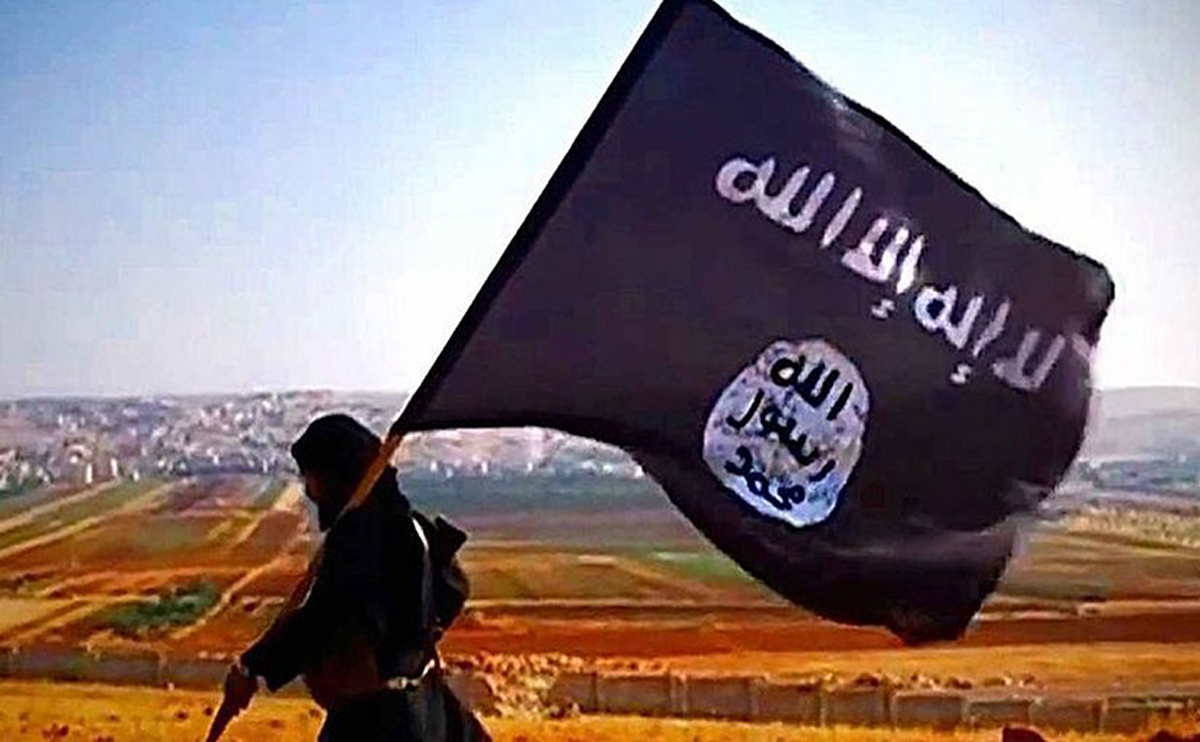
Centralization paved the way for the Islamic State
Analysis. The lesson to be drawn from the rise and fall of ISIS is that the old formulae of over-centralised unitary nation-states is a recipe for disaster in a region distinguished by an extremely high level of cultural and religious diversity and geo-strategic significance, writes Kamran Matin, Associate Research Fellow at the UI. In this article, he gives the historical background to and explains developments in Iraq and Syria and the rise of the Islamic State.
Publicerad: 2018-10-12
Mainstream accounts of the Islamic State of Iraq and Syria (ISIS), also known as the Islamic State (IS) and Daesh, tend to highlight either the group’s Islamic fundamentalist ideology, or the contradictions of the Western imposition of secular nation-states on the Middle East’s ethno-religiously fragmented populations, a circumstance for which the Sykes-Picot agreement is a byword.[1]
The first type of explanations is marked by an essentialist conception of Islam and Muslim societies whose orientalist premises have been refuted by critical scholarship within and beyond the academic field of Middle East Studies. The second type of explanations rightly focuses on the legacy of Western colonialism but often neglects the concrete ways in which the wider international relations of the region have shaped the political history of the region and formed the conditions of possibility of ISIS.
What follows is a tentative and highly schematic account of ISIS that seeks to address this neglect through taking a longer historical view. I suggest that the phenomenon of ISIS can be better understood as the product of the intersection of three main processes: the end of the Cold War and the neoliberal transformation of the international environment, the US-led dismantling of the Iraqi state, and the differential unfolding of the ‘Arab Spring’. The historical efficacy of these intersecting processes is causally linked to the peculiarities of colonial state formation in Iraq.
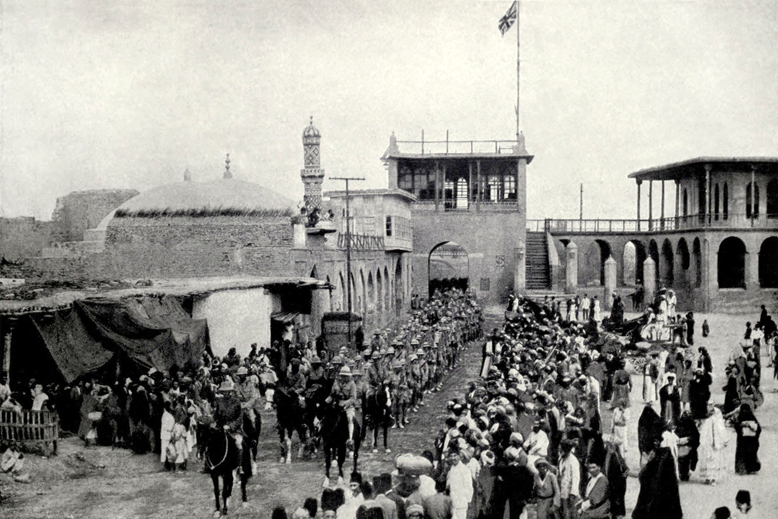 The Union Jack flies over Bagdad as British troops enter the city after its capture on March 11, 1917. Photo: Everett Historical/Shutterstock
The Union Jack flies over Bagdad as British troops enter the city after its capture on March 11, 1917. Photo: Everett Historical/Shutterstock
British rule over mandatory Iraq – a new territory carved out of Arab provinces of the collapsing Ottoman Empire – was shaped by wider colonial and geopolitical concerns rather than by the explicit requirements of the League of Nations mandate it purportedly sought to meet. These requirements aimed at laying the administrative and institutional groundwork for full independence. In other words, British mandate mounted to a de facto nation-state building project.
The functional and externally determined nature of the British mandate over Iraq involved the adoption of a series of pragmatic-tactical measures primarily aimed at securing and maintaining overland routes to India at minimum human and financial costs for Britain. However, these measures contradicted the official, nation-building aim of the mandate, for they entailed the reproduction, even intensification, of personalised forms of authority and communitarian forms of collective identities. Consequently, the development of social foundations for the rise of a modern nation-state based on the upward concentration of the citizens’ primary political loyalty in the nation was pre-empted. In effect, the formal-bureaucratic organs of the modern nation-state were superimposed upon a colonially inflected tribal formation. The dynamic contradictions of this internationally constituted sociological amalgamation have underlain and animated the overall patterns of socio-political developments of Iraq ever since.
Britain’s ‘indirect rule’ over Iraq is the genesis of this contradictory circumstance. It involved the dramatic empowerment of tribal sheikhs, landed classes, and rural notables whose expanded authority and influence elicited the reinforcement of communitarian bonds and ethno-religious identity of their constituents. At the same time, various organs of the modern state were also built to secure and maximize British influence and minimize the cost of its semi-colonial governance. For example, the most powerful institution of the new state, the army, was staffed with predominantly Ottoman-era Sunni Sharifian officers and new recruits from the Sunni Arabs.
The underlying logic of the policy was twofold. Britain was relieved from the costly deployment of a large military force to maintain internal order and security. At the same time potential challengers were fragmented through their parallel linkages of mutual, but asymmetric, dependency with colonial authorities. Preferential treatment of the so called ‘paramount Shaykhs’, i.e. those tribal leaders fully cooperating with the British, further undermined concerted local opposition. The new centralised state that was being built on this ‘divide and rule’ strategy therefore politically charged the Shi’a-Sunni sectarian difference beyond what had been the case under the comparatively much more decentralised Ottoman system.
After independence, the army emerged as the most organised and powerful political force in the country. It challenged the colonially valorised political hegemony of the conservative landed classes and tribal sheikhs as part of a rapid state-led developmental project. But this process itself involved the further consolidation of the ‘dominance without hegemony’ of a predominantly Sunni Arab state-class over a diverse population where Sunni-Arabs formed only a minority.
The reproduction of the colonially constructed minority-rule in Iraq therefore progressively charged the erstwhile ethno-religious difference into chronic sectarian tension. It also involved the exercise of systematic violence, the hallmark of Ba’ath regime in Iraq.
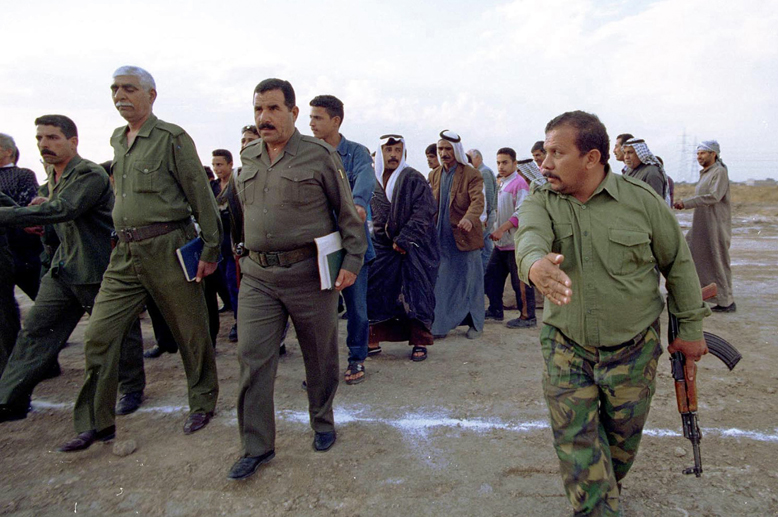 An arms instructor from ruling Ba'ath Party leads Iraqi men through a military drill in Baghdad in 1999. Photo: Northfoto/Shutterstock
An arms instructor from ruling Ba'ath Party leads Iraqi men through a military drill in Baghdad in 1999. Photo: Northfoto/Shutterstock
Growing oil revenues lubricated the reproduction of the Ba’athist party-state by turning it into a rentier petrostate increasing its relative autonomy from Iraqi society. The rentier economy, however, also enabled the introduction of an authoritarian welfare state that involved the exchange of socio-economic provisions for political acquiescence. Combined with the formal secularism of pan-Arab nationalism, this authoritarian welfare state allowed the Ba’ath party to acquire a degree of active or passive support from the wider population.
The exception to this dynamic was Kurdistan. Kurds could not be assimilated into the Ba’athists’ chauvinistic Pan-Arabism and therefore remained subject to constant and systematic securitisation and military repression. This policy approached genocidal levels in Iraq during the 1980s with the notorious Anfal operation and chemical warfare.
The collapse of this authoritarian welfare regime was a key cause of the rapid transformation of political contestation over the state into open sectarian conflict, which was, and remains, fuelled by a complex set of regional and international forces.
Iraq’s protracted war against Iran during the 1980s, in which it was supported by the West, had already deepened the Shi’a-Sunni divide domestically. The collapse of the Soviet Union and comprehensive economic sanctions following the 1991 US-led war against Iraq severely limited the ability of Iraq’s Ba’ath regime to continue its pre-war authoritarian welfare regime as an instrument of political pacification.
At the same time, and arguably more importantly, the sanctions and the ‘oil-for-food’ programme re-activated and strengthened sectarian and tribal affiliations as the only effective means of access to the limited resources that were ever tightly controlled by the state. In the competition over the extremely scarce resources, the population of the Sunni-Arab heartland had a natural edge over the rest of the population. This was further intensified by the Ba’ath state’s use of resource distribution ability as a strategic means of maintaining its core Sunni-Arab social base.
Moreover, the Shi’a-Sunni political tension had already been heightened as a result of the Ba’ath regime’s bloody repression of the Shi’a uprising in Southern Iraq in the immediate aftermath of the first ‘Gulf War’. Ironically, the uprising was incited by the US which later refused to support it lest regional balance of power shifted too far in Iran’s favour. Both circumstances geopolitically charged sectarian differences and strained them to the point of rupture. The actual rupture occurred with the 2003 US-led war and invasion.
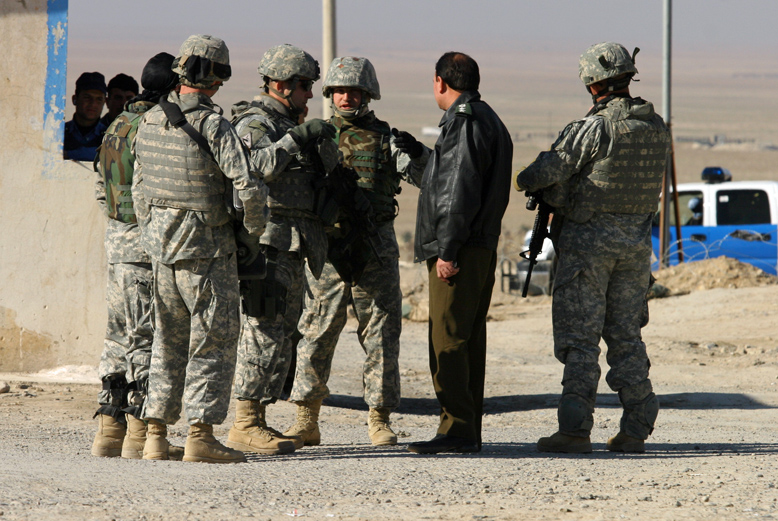 Checkpoint with US soldiers in Maxmur, Iraq, January 2007. Photo: Sadik Gulec/Shutterstock
Checkpoint with US soldiers in Maxmur, Iraq, January 2007. Photo: Sadik Gulec/Shutterstock
The US-led occupation began with the abolition of the Iraqi army and the introduction of a radical programme of privatisation and deregulation of the economy that completely dismantled the Iraqi state and its complex institutional set-up and therewith brought the century-long Sunni-Arab political dominance to an abrupt end.
The initial reaction of Iraq’s Sunni-Arabs to their sudden political and economic marginalisation was an armed insurgency that increasingly involved the indiscriminate targeting of the Shi’as, who were seen as collaborators with the US-led occupying forces. The American counter-insurgency strategy involved large-scale arrests, widespread torture, and collective punishment symbolised in the Abu-Ghraib prison. US counter-insurgency also increasingly relied on the Shi’a militia. This tactical US policy, which mimicked Britain’s ‘indirect rule’ strategy nearly a century previously, further deepened the Shi’a-Sunni conflict.
This context provided an exceptionally fertile ground for extremist Salafist groups, many of which relocated from Afghanistan to Iraq following the US invasion of that country in 2001. The Islamic State of Iraq (ISI), the predecessor of ISIS, was formed in 2006 from the merger of a number of Al-Qaeda affiliated groups. However, the holding of the parliamentary elections and the hope of at least some sections of the Sunni population for a more favourable power-sharing arrangement through constitutional politics delayed a broad Sunni-Arab support for ISI.
 US Secretary of State Hillary Clinton with Prime Minister Nouri al-Maliki, July 2009. Photo: US State Department
US Secretary of State Hillary Clinton with Prime Minister Nouri al-Maliki, July 2009. Photo: US State Department
However, the widespread sectarianism of the main Shi’a political forces, the government of Nouri al-Maliki in particular, progressively pushed large sections of the Sunni-Arab population towards the now extremely sectarianized Sunni insurgency.
Regional interventions exacerbated the already dire situation. Seeking to pre-empt the return of Sunni power in Iraq, Iran backed and manipulated Shi’a forces. On the other hand, fearing Iran’s growing regional influence, Saudi Arabia and some other Arab states supported the Sunni insurgency.
Meanwhile, the US ‘surge’ strategy and the formation of Sunni-Arab ‘Awakening Councils’ tribal militia put ISI on the back foot from 2006-2007 onwards. This was followed shortly by the outbreak of the ‘Arab Spring’ in 2010. The genealogy of the ‘Arab Spring’ itself is closely entangled with the international conjuncture of neoliberal dismantling of the state-led developmentalism in the Middle East and North Africa, the US ‘war on terror’, and the 2008 financial crisis.
Meanwhile, in Syria the ‘Arab Spring’ uprising quickly transformed into armed conflict following the regime’s systematic use of violence against peaceful protesters. The influx of support for the proliferating armed opposition groups – often coming from states with divergent, if not contradictory, aims – and the strategic backing of Iran and Hizbullah for the Assad regime transformed the conflict into a full-fledged civil war.
ISI seized the moment and shifted its military centre of gravity from Iraq to Syria and renamed itself ‘The Islamic State of Iraq and Syria (ISIS) to reflect its expanded sphere of operation. But it soon clashed with other armed opposition groups, including Al-Qaeda’s Syrian branch Jabhat al-Nusra, over the leadership of the opposition to the extent that it was renounced by Al-Qaeda.
With the completion of the withdrawal of US forces from Iraq in 2011 and some military setbacks in Syria, ISIS increased its operations in Iraq seeking to secure logistical routes for its Syrian front. This led to the capture of several towns such as Ramadi and Falluja in early 2014.
Meanwhile, the maximalist position of Iraq’s Sunni-Arab political parties, the open sectarianism of the ruling Shi’a government, and the ambiguity of some key articles of Iraq’s new constitution continued the political deadlock in Baghdad. The violent suppression of popular demonstrations in a number of Sunni-Arab areas following the formation of Maliki’s third government in April 2014 dashed any remaining hope for Shi’a-Sunni power-sharing. This pushed considerable sections of Iraq’s Sunni Arab population, including many former Ba’athists, towards ISIS.
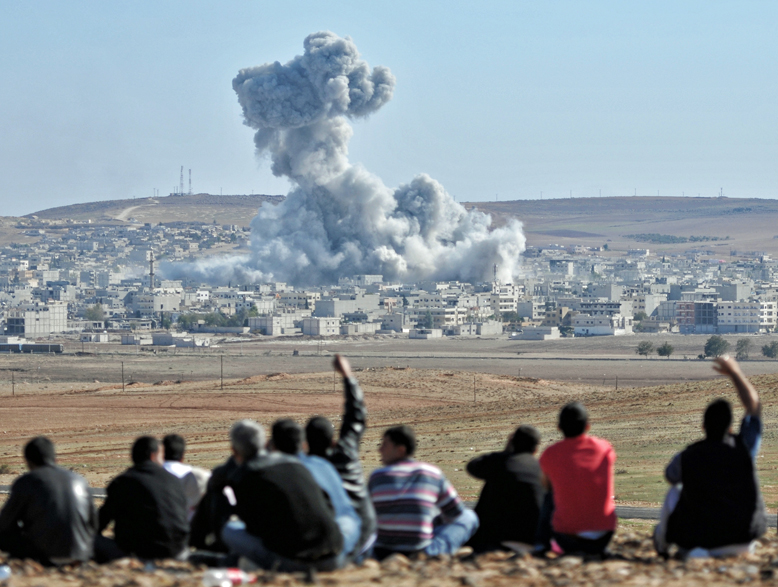 An explosion after an US-led coalition airstrike on Kobani, Syria, as seen from the Turkish side of the border, October 2014. Photo: Orlok/Shutterstock
An explosion after an US-led coalition airstrike on Kobani, Syria, as seen from the Turkish side of the border, October 2014. Photo: Orlok/Shutterstock
This multi-layered circumstance was central to the spectacular victory of ISIS’s June 2014 blitzkrieg that led to the capture of Mosul and nearly a third of Iraq’s territory, followed by the declaration of an ISIS-led caliphate called the Islamic State (IS). In this context the US intervened through aerial bombardment of IS in support of local anti-IS forces on the ground in a replay of the 2001 anti-Taliban war in Afghanistan. IS’s military momentum was soon blunted especially following the historic battle of Kobani, which arguably marked the beginning of the end of IS.
IS has now been militarily defeated by a US-led coalition of more than fifty countries and an array of local non-state actors, notably Kurdish and Shi’a militias, and, to a relatively lesser extent, militaries of Syria, Iran, and Russia. However, Iraq and Syria are unlikely to return to the status-quo-ante.
The lesson to be drawn from the rise and fall of ISIS, and indeed the preceding century of crisis in the region, is that the old formulae of over-centralised unitary nation-states is a recipe for disaster in a region distinguished by an extremely high level of cultural and religious diversity and geo-strategic significance. This circumstance makes the region particularly susceptible to the interplay of local and external forces whose tactical convergence often conceals their strategic divergences and entails unintended consequences.
[1] This piece is based on of the following article: 'Lineages of the Islamic State: An International Historical Sociology of State (De-)Formation in Iraq', Journal of Historical Sociology, 2018, 31:6–24.